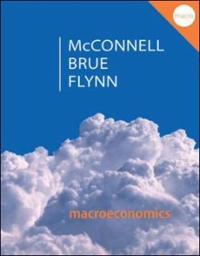Answered step by step
Verified Expert Solution
Question
1 Approved Answer
#1) The table below is of hourly labor productivity (i.e., output per employee). Rice Cheese Labor Productivity: China/F 8 kg/hour 4 kg/hour Labor Productivity: Japan/G
#1) The table below is of hourly labor productivity (i.e., output per employee).
| Rice | Cheese | ||
|---|---|---|---|
| Labor Productivity: China/F | 8 kg/hour | 4 kg/hour | |
| Labor Productivity: Japan/G | 6 kg/hour | 2 kg/hour | |
- What are the absolute advantages in this example?
- What are the comparative advantages in this example? How do you know this?
- After a trade liberalization what would China export and import? Why?
- After a trade liberalization what would Japan gain? Why?
#2) A product is produced in a monopolistically competitive sector with scale economies. If this sector exists in two countries, and these two countries engage in trade with each other, how would production change?
#3) Home produces capital intensive manufactured goods and agricultural products. Suppose that FDI doubles the amount of capital in Home.
- Assuming constant returns to scale, what happens to Home's production possibilities frontier (PPF) in the short run?
- What happens to the capital-labor ratio in long run?
- What happens to the free trade relative price of manufactured goods in long run? Why?
Step by Step Solution
There are 3 Steps involved in it
Step: 1

Get Instant Access to Expert-Tailored Solutions
See step-by-step solutions with expert insights and AI powered tools for academic success
Step: 2

Step: 3

Ace Your Homework with AI
Get the answers you need in no time with our AI-driven, step-by-step assistance
Get Started


